Статьи журнала - Вестник ВолГУ. Серия: История. Регионоведение. Международные отношения
Все статьи: 1645
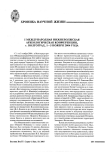
I международная Нижневолжская археологическая конференция, г. Волгоград, 1-5 ноября 2004 года
Статья
Бесплатно
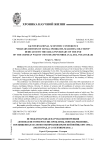
Статья обзорная
В статье представлена информация о проведенной 23-24 сентября 2016 г. в г. Волгограде III Международной научной конференции «Военная история России: проблемы, поиски, решения», посвященной 160-летию окончания Крымской войны 1853-1856 годов. Конференция проведена в Волгоградском государственном университете. Организаторами конференции выступили ФГАОУ ВО «Волгоградский государственный университет», Центр коллективного пользования «Военная история России», Центр по изучению Сталинградской битвы, ФГУБК «Государственный историко-мемориальный музей-заповедник “Сталинградская битва”», ГКУВО «Государственный архив Волгоградской области», Волгоградское региональное отделение Академии военных наук, Волгоградское региональное отделение Российского военно-исторического общества. Конференция была содержательной и представительной по своему составу: свыше 100 представителей научных учреждений РАН, вузов, архивов, музеев и библиотек 20 городов России, Азербайджана, Белоруссии, Украины. Среди участников конференции 22 доктора наук, 40 кандидатов наук. Наряду с уважаемыми профессорами и доцентами в работе конференции приняли участие молодые ученые: ассистенты, аспиранты, магистранты и студенты. В статье проанализирована работа пленарного заседания и 10 секций, центральной из которых была секция «Крымская война: Россия и мир». В постоянных секциях были представлены доклады о военной истории в древности и средневековье, новом и новейшем времени, социальной защите населения в условиях военного времени, военно-политических конфликтах как угрозе безопасности общества и государства, международных аспектах военных конфликтов, военном искусстве в методологии международных «wargame» исследований, подведены итоги работы Центра по изучению Сталинградской битвы.
Бесплатно
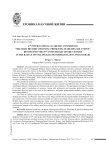
Другой
В статье представлена информация о проведенной 20-21 октября 2017 г. в г. Волгограде IV Международной научной конференции «Военная история России: проблемы, поиски, решения», посвященной 75-летию победы в Сталинградской битве. Конференция проходила в Волгоградском государственном университете. Организаторами конференции выступили ФГАОУ ВО «Волгоградский государственный университет», Центр коллективного пользования «Военная история России», Центр по изучению Сталинградской битвы, ФГУБК «Государственный историко-мемориальный музей-заповедник «Сталинградская битва», ГКУВО «Государственный архив Волгоградской области», Волгоградское региональное отделение Академии военных наук. Конференция была содержательной и представительной по своему составу: свыше 150 представителей научных учреждений РАН, вузов, архивов, музеев и библиотек 28 городов России, Азербайджана, Белоруссии, Узбекистана и Украины. Среди участников конференции 23 доктора наук, 63 кандидата наук. Наряду с профессорами и доцентами в работе конференции приняли участие молодые ученые: ассистенты, аспиранты, магистранты и студенты. В статье проанализирована работа пленарного заседания и 10 секций, центральными из которых были секции «Сталинградская битва: история и современность» и «Нижняя Волга и Дон во время Сталинградской битвы». В постоянных секциях были представлены доклады о военной истории в древности и средневековье, новом и новейшем времени, социальной защите населения в условиях военного времени, военно-политических конфликтах как угрозе безопасности обществу и государству, международных аспектах военных конфликтов, военном искусстве в методологии международных «wargame» исследований.
Бесплатно
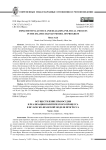
Implementing justice and realizing political process in the Islamic-Iranian model of progress
Статья научная
Introduction. The Islamist model of Iran assumes understanding national values and recognizing rights of indigenous peoples, seeks to meet the material and spiritual needs of society. This model has epistemological, ontological, and anthropological foundations rooted in the revelatory and ideological teachings of Islam. Its content, therefore, is based on monotheism, resurrection, and the inseparability of the worlds. The process of political development in the Islamic-Iranian model is progress based on divine and Islamic knowledge, arising from the heart, historical, indigenous, and cultural conditions of our country, which are realized in the context of the Islamic Republic of Iran. The importance of the research is that, by explaining the indicators of political development, it outlines how the will to achieve it forms in society. Methods and materials. To achieve the desired development and stand up against adversities and sanctions, we must identify our needs, limitations, and political, social, and economic harms and take action to solve them, then keep pace with the new global developments. The strategies considered for data analysis in the present study are in the framework of a qualitative method and based on a descriptive-analytical approach. Analysis. The study raises these questions: what indicators comprise the Islamic-Iranian model of progress’s political development, and how can this model achieve sustainable political development? The results of the study show the indicators of political development in the model are in accordance with the Sharia, and the context of sustainable political development is achieved by committing to implementing justice in the policy-making environment of society.
Бесплатно
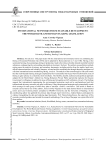
International networks for sustainable development: the world bank and Russian flaring legislation
Статья научная
Introduction. This paper deals with the international environmental norms on combatting the flaring of Associated Petroleum Gas (APG) and its adoption by Russia (decrees no. 7 and 1148). Flaring, or the systematic burning of associated gas during oil production, leads to the release of carbon dioxide and other harmful substances, endangering the surrounding and global environment. Methods. The authors use qualitative methods resting upon the analysis of primary and secondary documents, including articles from the media, legal texts, official communications and scholarly literature, to trace back the conditions that brought about the emergence of a distinct international norms condemning flaring. Analysis. The analysis of the norm through its life cycle reveals that the multi-faceted framing strategies employed by the Transnational Advocacy Network allowed the issue of flaring to gain salience in a relatively short timeframe. The flexible, durable, technical and apolitical approach adopted by the World Bank’s Global Gas Flaring Reduction Private Public partnership explains the Russian Government’s willingness to address the issue of flaring and to legislate on APG utilization. Results. The findings suggest that international campaigning for environmental protection need not be confrontational and that transnational advocacy networks may gain in efficiency if they adopt targeted strategies and systematically recode their message for each group of actors they plan to sensitize. Authors contribution. This article is based on research carried out by one of the authors, Anne Crowley-Vigneau for her dual doctoral thesis on international norms and Local Content policies completed at MGIMO University and the University of Reading. As the coordinating author she gathered the primary data through expert interviews. Andrey Baykov participated in coding, triangulating the data and studying legal documents. Prof. Yelena Kalyuzhnova, the supervisor of this research, provided guidance and created the research methodology. The writing of the paper was a joint effort of all three authors.
Бесплатно
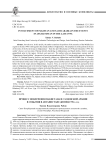
Involvement of Pakistan and Saudi Arabia in the events in Afghanistan in the late 1970s
Статья научная
Introduction. In this article, the author examines the position of the countries of the Middle East region in the late 1970s with regard to the armed conflict in Afghanistan. The emphasis is on the period on the eve of the entry of the Soviet troops to Afghanistan - from the April Revolution of 1978 until December 1979. The author’s focus is on two states: Pakistan directly bordering on Afghanistan, and Saudi Arabia, which is a major geopolitical actor in the region. Methods and materials. The author relies on documentary sources such as “Department of state bulletin”, documents of secret correspondence of the U.S. foreign policy agencies, documents of the U.S. National Security Archive, and special volumes on Afghanistan and the Middle East in “Foreign Relations of the United States. Diplomatic Papers, 1977-1980”. Thanks to these sources, it is possible to prove that the involvement of the states of the region in the Afghan armed conflict and its internationalization began even before the Soviet troops entered Afghanistan. Analysis. First, an overview of the objectives pursued by these states in Afghanistan and in the internal Afghan armed conflict is given. Following this, the author consistently reveals the position of these states in relation to the April Revolution of 1978, the ever-increasing Soviet involvement in the Afghan events (1978-1979) and the civil war that started against the Kabul government. Results. In conclusion the article reveals the role of these states in the process of internationalization of the Afghan armed conflict, which, according to the author, began before the Soviet troops entered Afghanistan.
Бесплатно
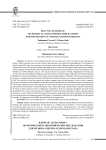
Статья научная
Introduction. No doubt that the Iran-USA nuclear deal of 2015 got fame in the international politics. Some countries were in favor of such a deal and some were against this development. The Kingdom of Saudi Arabia (KSA) has more concerns over the Iran nuclear deal, it feels that after the deal Iran will become a regional power and will increase its military and political power which will disturb the regional securityand stability. As the Kingdom of Saudi Arabia (KSA) itself provokes the creation of such conditions, thus their influence in the Middle East will be affected. Analysis. The article analyzes the concerns of Israel, implications for Turkey, the question why deal is beneficial for Pakistan, economic concerns of Saudi Arabia, implications for Persian Gulf and Middle East, economic implications for Turkey, economic opportunities for Pakistan. After the nuclear deal, Iran becomes a regional power and increases its political and economic influence in the region, especially in the Persian Gulf. The world says that Iran cannot get nuclear weapons after the deal because it has no such a capacity. However, according to some findings from the documents of the deal Iran is not blocked to become a nuclear power and the deal legitimizes the nuclear program. So, on the other hand after the Iran nuclear deal the regional political and economic environment is totally favorable to Iran. On the other hand, scholars believe that the United States of America (USA) operate in terms of diplomatic competition. From the economic standpoint, the deal will be favorable for Iran. Thus, some countries have objections related to the deal, while others express a positive attitude towards it. Results. Pakistan will be able to generate economic opportunities from Iran, especially with the help of Iran-Pakistan-India Gas pipeline project (IPI project). Consequences of the deal will be beneficial for the regional economic development of the Middle East and South Asia respectively.
Бесплатно
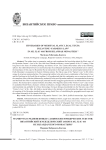
Статья научная
The author aims to summarize, analyze, and supplement the knowledge about the Slavic copy of the Byzantine Farmer’s Law in Ms. Slav 466 from Hilandar monastery, second quarter of the 15th century. It has long been in the focus of Serbian philology and history of law. The current observations refer to the following spheres: the relationship between text and manuscript, the axiological significance of precedential texts in culture, the importance of this copy for Byzantine-Slavic interactions in the legal system, the uninterrupted cultural role of Holly Mountain’s monasteries for Eastern Christian culture. The Slavic copy of the “Farmer’s Law” in Hil. 466 is unique by structure and peculiarities. The manuscript testifies to the only known combination of the Farmer’s Law and the Prochiron in the South Slavic tradition. It is hypothesized that this combination was a conscious choice of the compilers of the collection influenced by tendencies in the post-Byzantine tradition. It corresponded to the strong anti-heretical line of the overall manuscript, inherited from the struggles against heresies on Mount Athos in the 14th century. The manuscript is a typical monastic miscellany. The linguistic nature of the “Farmer‘s Law” copy reveals its undoubted South-Slavic character, without russification, strongly influenced from the Greek protograph. Copy and translation may probably be of close chronology. Owing to being a precedential text, the Slavonic copy of the “Farmer’s Law” in Ms. Slav. 466 holds a special place in the attempts of reconstructing the stages and processes of reception of the Byzantine juridical legacy among South Slavs, of establishing the geographic-areal scope and the cultural itineraries of the spread of this text.
Бесплатно
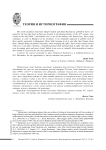
Ivan the terrible: reform and reaction
Статья научная
Introduction. Hugh F. Graham (1925-1994) was a famous American historian, Professor at California State College (Bakersfield, USA), specialist in Greek and Latin sources for early Russian history, he also translated a number of R.G. Skrynnikov’s works into English. In this article, devoted to the epoch of Ivan IV the Terrible, H. Graham presented his view on the political processes that took place in the highest strata of the Moscow State that constituted the closest circle of Ivan IV the Terrible and that could influence the internal reforms and foreign policy in the state. Materials. The study is based on the works of Russian and foreign historians, which allowed the author of the article to show controversial issues and prepare the article using the problem approach (their names and titles of the works are specified in references). In addition, H. Graham drew attention to the data from the following published sources: the works of I. Peresvetov, Protestant pastor in Lithuania Pavel Oderborn, and others. Analysis. In this article, the author consistently outlined the events of the reign of Ivan IV: he paid attention to the reforms of the Elected Rada, the oprichnina, and the postoprichnina period. H. Graham noted that along with the active study of the oprichnina period by historians, the issue of functioning was missed, while Zemstvo acted in accordance with the former administrative and institutional norms, continued to function under the traditional aristocratic leadership of the princes I.F. Mstislavskii and I.D. Belskii, whom Ivan IV, in fact, called co-rulers, proclaiming: “We three hold all the power”. H. Graham did not agree with the view of the oprichnina as a struggle with the aristocratic circles. The historian saw the following paradox: almost all the victims were leading figures in the new world, and not advocates of the old order. They were responsible for developing management tools and served in key institutions, participating in the centralization process promotion. They helped the tsar to acquire more authoritarian power he so longed for. Results. It is the contention of this paper that the reign of Ivan the Terrible was not atypical, but simply a continuation in its own way of the regular path of development the Muscovite monarchy had long been following. However, a man still able to provoke such wildly disparate assessments of his character and accomplishments will continue to fascinate psychologists, bellettrists, historians, and popularizers alike. They will keep returning to him and hope that someone someday will at last manage to capture the elusive essence of the era and of the man himself in such a way as to win general acceptance. The abstract is prepared by Candidate of Sciences (History), Associate Professor N.V. Rybalko. The works of famous historians Hugh Graham and Knud Rasmussen, published below, are united by the fact that both of them are devoted to the Russian history of the 16th century, were written in the mid-1980s * and handed over to me by the authors who honored me, their young colleague, to come to Budapest at my invitation. I was originally supposed to publish each of these articles separately in Hungarian. Then I didn’t manage to do it, and after that I forgot about them. Though during my further relocation, when arranging the office, these articles always moved with me to a new place, therefore, I remembered about them and kept them in sight. Over time, they were becoming more and more clearly linked in my eyes as valuable historiographical sources that should be preserved for the next generations. I express my sincere gratitude to Igor Olegovich Tyumentsev, a faithful follower of R.G. Skrynnikov, for the opportunity to put my intention into practice. * Dating them is challenging because there are no dates of writing on the manuscripts with the exception of Hugh Graham’s work (see more about him: http://naukarus.com/hyu-grehem-indianskiy-eksperiment-i-sovetskoe-antikovedenie-50-60-h-godov). Knud Rasmussen (see more about him: http://novist.history.spbu.ru/trudy_kafedry/16_2_2016/2016_16_2_Vozgrin_V_E_-_Knud_Rasmussen_i_Hans_Bagger_datskie_istoriki_Rossii.pdf) probably gave me his article in 1984, when he came to Budapest shortly before his unexpected death in 1985.
Бесплатно
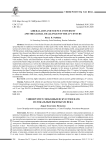
Liberal arts and science university and the global challenges of the 21st century
Статья научная
Introduction. Over the last 30 years, the educational model based on liberal arts and sciences has spread beyond its traditional United States to other parts of the world. However, recently, many liberal arts and science universities face a challenge: due to the pressures of the fast developing world, young people prefer more STEMs (science, technology, engineering and mathematics) oriented universities. The paper addresses the following question: How have private liberal arts universities adjusted to the global challenges of the 21st century? Methods and Materials. This paper conducts a case study of one of American leading private small universities - Reed College (Portland, Oregon, USA) by using reports on and studies of liberal arts universities and its graduates; interviews with students, faculty and administration of Reed College as well as academic writings on the subject. Paper examines the Reed College curriculum, faculty and student body, examines evidence from the current Reed faculty, student body and alumni, as well as the information about jobs that Reed alums land. Analysis. In the process of analysis, the paper discusses as to whether this adaptation has led to giving up on some of Reed College traditional principles. The role of international partnerships / programs in this process is analyzed. Results. The paper demonstrates that Reed College has been adapting to the global challenges of the 21st century by keeping its main focus on individual learning, research collaboration between faculty and students as well as expanding its majors to reflect the demands of the time, staying financially sound by incorporating alumni donations, and engaging internationally.
Бесплатно
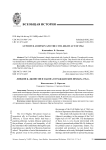
Lyndon B. Johnson and the Civil right act of 1964
Статья научная
The Civil Rights Movement is deeply intertwined with Lyndon B. Johnson. Throughout his career, Johnson supported the quest of African-Americans for political and civil rights. They found in him an ally whose role was fundamental in fullfilling the goals of Martin Luther King, Jr, and the Civil Rights Movement. This paper will examine the role of the Johnson presidency in the passage of the Civil Rights Acts of 1957 and 1964.
Бесплатно
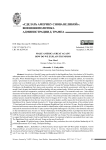
Make America great again? How do we explain trumpism
Статья научная
Introduction. Donald Trump was the nadir for the Republican Party; his election in 2016 and his subsequent tenure as President from 2017 to 2021 was the low point of the evolutionary descent and destruction of the party. When Ronald Reagan was elected the 40th president in 1980 at his inaugural address, he warned the nation: “government is not the solution to our problems; government is the problem”. One of his first legislative actions was to cut federal taxes on the wealthiest Americans. From that hour on, the Republican Party set their mantra as “lower taxes and shrink government, at all levels” (except for National Defense). Since Ronald Reagan’s Presidency, the Republican Party knows only one policy, cut taxes and shrink government; with that as its most sacred Creed, the party has blocked itself from dealing with anynational needs. Methods and materials . The methods used in the article are comparative, analytical, and functional systematic. The materials used were: 1) the official documents of President R. Reagan Library; 2) secondary accounts of contemporary events; 3) the materials of US media and selected articles of political experts. Analysis. The article provides some reflections on the evolutionary political process inside the Republican Party from R. Reagan till D. Trump. The authors analyze the context of political and ideological crisis, the new wave of conservative leaders, and the reasons for the structural crisis of the Republican Party. Special attitude devoted to D. Trump phenomena and the description of his political mind. Heed analyzed the main trends of the development Republican Party in the last 30 years. He also selected some historical and current sources from mass media for identification of the controversy inside the GOP. A. Kubyshkin analyzed the connection inside the US party system with global challenges for US policy in the domestic arena and on the international scene . Results. D. Trump’s bankruptcy of the Republican Party is perhaps best shown by the platform he ordered for the 2020 campaign. There should be none. This action best describes what Trump did to the GOP. By Trump’s command, all the Republican partyneed offer was Trump. The only campaign slogan needed was to support the beloved leader. Only he could heal the nation. No statement of policies was needed; there were none. The Republican Party was left with only Trump as the one all and be all.
Бесплатно
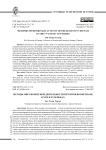
Methods of missionary activity of the Jesuits in Vietnam in the 17th and 18th centuries
Статья научная
Introduction. The purpose of this study is to reproduce precisely and accurately the process of conquering the faith of various social strata in Vietnam by analyzing the missionary methods of evangelization applied by Jesuit missionaries operating in Vietnam in the 17th and 18th centuries. Methods and materials. The author used the original historical materials recorded by Western missionaries working in Vietnam during the 17th and 18th centuries and research works by Vietnamese and international scholars related directlyor indirectly to the missionary methods of Jesuits in Vietnam of the 17th and 18th centuries. The author combines the historical and genetic method with other research methods (systemic approach, analysis, synthesis, comparison, etc.). Analysis. In the 17th and 18th centuries, to conquer the faith of the people in Tonkin and Cochinchina (Vietnam), Jesuit missionaries adopted several measures such as establishing relationships and attracting the upper classes to the Christianity, “missionary academic”, “missionarybibliography”, disputes and religious conversion of the leaders of indigenous denominations, etc. These measures have been more or less effective and allow Jesuit missionaries to introduce and develop the Christianity in Vietnam during this period. Results. The research results presented in the article will contribute to the study of the historyof Christianity and missionary activities of the Jesuits in Vietnam in the 17th and 18th centuries.
Бесплатно
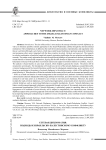
Network diplomacy: approaches to the Israeli-Palestinian conflict
Статья научная
Introduction. The aim of the article is to to analyze the concept of modern network diplomacy as well as to illustrate possible solution approaches to the Israeli-Palestinian conflict through the abovementioned mechanism. Network diplomacy is defined as the multi-level communication, representation, and negotiation of an idea or a set thereof through a set of actors, which may extend beyond traditional, rigid state sponsored institutions and encompass other actors integrated with the idea or parties involved. Methods and materials. The research involved a combination of analytical empirical research containing justification for case selection and qualitative research. The author mostly approaches the topic through liberal paradigm of international relations, accentuating mutual benefits of international cooperation, arguing that flexible formats of diplomacy can be an effective way to help states to interact with each other in an honest manner and support nonviolent solutions to conflicts. Analysis. The analysis is based mainly on case study research, which helped to generate the results. The article will be structured in several parts. The introduction will render an overview of the network diplomacy concept followed by a historic background of the Israeli-Palestinian conflict and its ideological underpinnings, and so inform a set of theories as pertaining to the potency of network diplomacy in the solution process, which will be outlined in the parts following it. These theories will then be evaluated in the context of the overall environment and specific cases- NGOs as a reach out function in water management at the municipal level, academic institutions establishing communication channels independent of the larger political environment, and a short summary of European Union outreach to non-state actors as an illustrative case of state to non-state actor diplomacy. Moreover, the article includes the study of citizen diplomacy, civil society-based approaches, economically driven incentives and other cultural initiatives such as sports-based diplomacy as possible mechanisms. Results. Network diplomacy may feature a multi-pronged approach to diplomacyrepresented through a mixture of, for example, state actors and non- governmental organizations (NGOs). Network diplomacy is particularly potent in spreading ideas as it allows engagement of a multitude of actors directly, and is subject to comparatively low transaction costs. Network diplomacyappears to be a promising approach to the solution of the Israeli-Palestinian conflict which is characterized by juxtaposing ideological underpinnings in addition to issues of realpolitik, and a multitude of actors including non-state actors.
Бесплатно
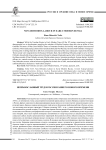
Non-orthodox labour in early modern Russia
Статья научная
While the Tsardom Russia in Early Modern Times till the 18th century experienced a constant demographic loss to slavehunters supplying the markets of Muslim Empires, there also was an influx of Non- Orthodox Prisoners of War (from Muslim Tatars to Protestant Swedes) and socially weak people from annexed territories. Most Jasak-paying communities remained ethnically Non-Russian, but some Non-Orthodox “foreigners” by being sold or selling themselves left their communities and entered the status of peasants respectively kholops. These mostly were integrated into the Russian Orthodox flock. By prohibiting Orthodox people to serve in Non- Orthodox households clergy and government hoped to safeguard laypeople against other creeds, but strengthened the labour-market of Non-Orthodox servants. Muslim estate-owners, Armenian merchants, German doctors, Scottish officers etc. wanted servants in house and garden to care for their households and keep their social standings. Non-Orthodox servants, referred to but not regulated in the basic law of 1649, remained ethnically Non-Russian and confirmed Russia's character as “multi-ethnic Empire”.
Бесплатно
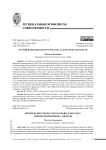
October 2020 protests in Poland. A case study of Olkusz
Статья научная
Introduction. In October 2020 the most extensive social protests took place in Poland since the democratic transformation in 1989. They were caused pertinently by the Polish Constitutional Tribunal’s decision and government policy on abortion. Numerous protests were held all over the country, both in larger cities, smaller towns and villages. Methods and materials. The study presents the results of the internet surveying method (CAWI) and snowball sampling. These were the only methods which can be used to study protest participants themselves (busy straightening in the streets), but also useful because of the pandemic situation in Poland. A 30 question survey was filled by about 200 people who took part in the protest in Olkusz city. Analysis. Research was made in time of “first main wave of protests” period, i.e. October 24-26, 2020. The author underlines the role of youth in the protests, and wants to answer two main research questions, first of all: what was the role of ‘Generation Z’ in October protests, and as well: what are the political views of the protesters. Researches about the first “hours” of protest are mostly extremely rare, the article also allows to see not only new youth Gen Z, but also modern civil protests. Results. Results show that the participants comprising mostly youth were not conservative, and could easily be considered a new generation of Poles - quite different from their older colleagues. But how and why are youngsters so politically different?
Бесплатно
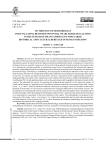
Статья научная
Introduction. The task of the study is to identify and characterize the means of popularization of the regional historical and cultural heritage on the example of archaeological monuments of Volgograd Oblast. Taking into account the need to diversify regional cultural and educational tourism, to actualize new practices in heritage tourism we consider it necessary to focus on the archaeological heritage unique for most regions. Due to its interactivity and the possibility of combining several forms of recreational and cultural and cognitive activities, archaeological tourism can also become one of the most promising forms of promotion of cultural and historical heritage. Developing a methodology for assessing the archaeological potential of the region in the field of tourism will allow us to understand the principle of formation of a unique geo-cultural image of the region as the basis of cultural and historical framework. Methods. Assessment of the archaeotourism potential of Volgograd Oblast is possible with a combination of the Analytic Hierarchy Process (AHP) and Weighted Linear Combination (WLC), and applied methods, such as the questionnaire and Geographic Information System (GIS). Analysis. We identified the criteria for assessing the archaeotourism potential of the region the number of which can be limited to 1 quantitative and 7 qualitative indicators ranked on an assessment scale with 4 rating points - 0, 2, 4 and 5. Since the selected evaluation criteria play an unequal role in the formation of the tourist potential of the territory, it was necessary to determine the weighted coefficients for each of them. Results. The development of archaeological tourism acting as the most accessible and most popular forms of popularization of cultural heritage will be provided by the development of the territory’s historical and cultural framework based on a comprehensive assessment of the tourist potential of the region. The methodology was proposed in the framework of this study. Authors’ contribution. V.A. Zolotovskiy prepared the part devoted to the actualization and identification of the research topic. P.I. Lysikov developed an adequate methodology for assessing the archaeotourism potential of the Volgograd Oblast.
Бесплатно
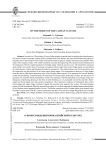
On the origin of the Caspian culture
Статья научная
Introduction. The territory of Lower Volga occupies a special place in studying the cultural genesis of Eastern Europe. Prominent cultures of the Eneolithic and Early Bronze Age were formed there and played an important role in the formation of the Volga-Ural hearth of cultural genesis. Equally important is the problem of the origin of the Caspian culture, with which researchers associate the beginning of the spread of cattle breeding and the emergence of the first copper products in the Volga steppe. Methods and discussion. The researchers expressed quite similar views on this issue. The process of Caspian culture origin in the Lower Volga region was considered as autochthonous with the participation of northern components. The substrate basis was the Oryol culture, and the superstrate was the societies of the Volga region forest-steppe. The comprehensive analysis of Volga steppe materials allows offering an alternative view of the Caspian culture genesis. The appearance of several features (collar-like thickening, a combed stamp, the technique of increased spin, producing economy, the dominance of quartzite raw materials for the manufacture of tools, the technique of forced squeezing in the receipt of logs, the emergence of producing farming in the form of cattle breeding, etc.) is associated not with the northern forest- steppe and forest-steppe, but with western components. The comparative analysis of radiocarbon dates of the forest-steppe and steppe Volga, Northern Caspian Sea and Don area supports this version. The chronological priority is fixed for materials of the Don area and Azov region. It is in these areas that the leading features characteristic of the Caspian culture appeared earlier. Results. The earlier complexes of the Caspian culture were formed in the Northern Caspian about 5700 BC. Later its penetration into the Lower and forest-steppe Volga Basin was recorded.
Бесплатно
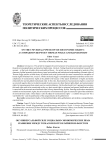
On the universal power of socioeconomic rights: a comparison between Thomas Pogge and Rainer Forst
Статья научная
Introduction. This article investigates the universal power of socioeconomic rights assessing their theoretical conceptualization and practical implication. Methods. Taking theoretical and empirical research into account - at the level of public ethics and political theory - the article carries out a comparative analysis of the elements of global economic justice theory, moral universalism and institutional understanding of human rights of Thomas Pogge and the critical theory of political and social justice and the moral constructivist conception of human rights of Rainer Forst. Analysis. On the one hand, Pogge’s cosmopolitan approach underlines serious non- compliance of socioeconomic rights at the global level because of the unjust distribution of rights and duties enforced by the current global institutional order. In this vein, the protection of socioeconomic rights is conceived as a (moral) negative duty not to deprive people of secure access to a basic human rights object, and socioeconomic rights, by imposing upon them unjust coercive social institutions. On the other hand, Forst’s perspective maintains that each right needs to be constructed on the very basic moral right to reciprocal and general justification which is conceived as the most universal and basic claim of every human being. Results. Drawing on the above-mentioned outlooks on socioeconomic rights, the universal power of socioeconomic rights is assessed in light of the satisfaction of universal basic needs, whose object is also the object of socioeconomic rights - a ‘conditio sine qua non’ for a worthwhile life - and the justification of the assigned duties at the global level.
Бесплатно
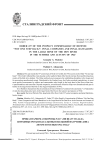
Статья научная
This year marks the 75th anniversary of Order 227 of July 28, 1942, known as the Order “No one step back!”. This Order reflected the crisis situation on the southern flank of the Soviet-German front and the disastrous results of the Red Army defeats. The Order outlined severe measures for establishing discipline in the troops and for preventing unauthorized retreat. Distributed to the Combat Army, the Order provoked contradictory, in most cases positive assessments by soldiers and commanders who fought in the large bend of the Don at that time. 6 penal battalions and more than 30 penal companies, several dozens of barrier troops were formed and took part in battles in the large bend of the Don in the August-September of 1942. G.G. Matishov characterizes the circumstances of issue of Order 227 and draws the conclusion. V.I. Afanasenko reveals the data about penal units in the large bend of the Don in the summer and autumn of 1942.
Бесплатно

